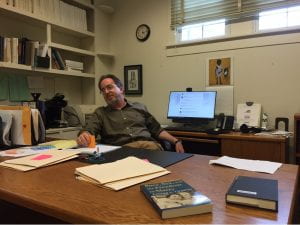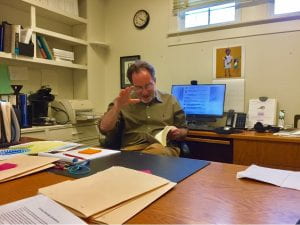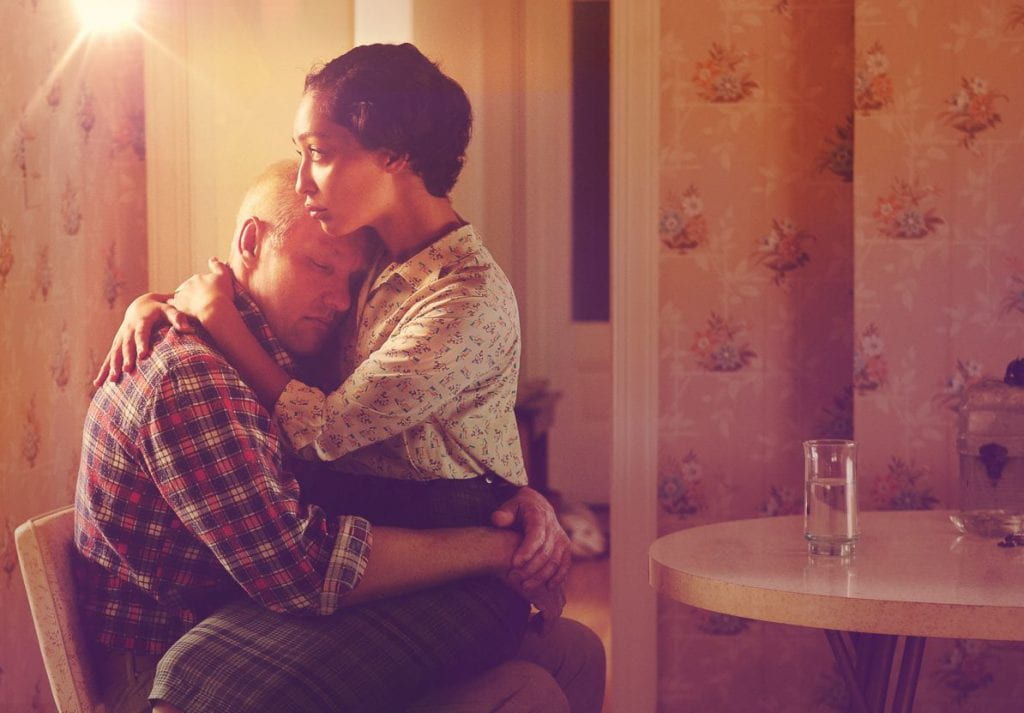
Guest post by Alex Armijos and Hannah Boomershine.
Themester interns Alex Armijos and Hannah Boomershine had a conversation with Alex Lichtenstein, a professor of history at IU. They discussed the social context of the landmark case Loving v. Virginia, which inspired the 2016 Oscar-nominated film, Loving. Lichtenstein’s work examines the intersection of labor history and the struggle for racial justice in societies shaped by white supremacy.
HB: Why was interracial marriage made illegal in Virginia under the Racial Integrity Act of 1924? How did eugenics play a role, and what were the societal impacts of this law? This is a lot to put into one answer, but I was wondering if you could talk about some of the context leading up to this important case.
AL: It’s interesting, because the film does takes place in Virginia, which was infamous for the Racial Integrity Act in 1924, which grew partly out of the Eugenics Movement, the movement to sort of “purify” births. It wasn’t just about black and white, it was about immigrants, native-born people, so-called “idiots.” It was a whole movement to purify Anglo-Saxon stock, as it was called.
But all that said, you guys are absolutely right, it’s in that context of broader laws about eugenics, and not mixing supposedly incompatible races, as these people saw it. But, of course, this case was also very specifically about the South, and about black/white relations. So, Virginia was hardly exceptional in this regard.
So, the point being, [Loving v. Virginia] was an important test case that wasn’t just going to eliminate the Racial Integrity Act in Virginia, but was going to put paid to these laws nationally once and for all. So, I think it’s really important to understand that as part of the context, the long-term context, as I’m sure you know.
The short-term context was, as a challenge to [the Act], the Loving case was an outgrowth of the Civil Rights Movement. I would say it was no accident that this was, in some ways, the last of the barriers to fall. We’re talking three years after the Civil Rights Act 0f 1964, and two years after the Voting Rights Act.
I know the case started out earlier on, but the way these legal cases work out, you might say, oh, 1967 is so late, and that’s true, that’s the Supreme Court ruling. The film does a good job of this, but it does show, in this case, that the process started in the early ’60s, late ’50s, when Richard and Mildred were first arrested in 1958, maybe 1959.
AA: Yeah, they were married in the ’50s. And the community knew about them, and then someone gave off an anonymous tip, and in the dead of night…
AL: Right, and that’s the one part of the film that’s very dramatic, and I thought that was very good. You’re made to see the sheriff in Caroline County as racist, but you don’t see burning crosses in this movie, you don’t see violent racist mobs shouting. You just see the use of the law. And there’s one moment when the sheriff knocks down the door, but the rest of it is just the law as kind of an abstract instrument, not a violent mob force. So that’s what I like best about the movie. Sort of a reminder that segregation, white supremacy, and racism were upheld by legal systems, not just by people dressed in white sheets. So, I thought that was really important about it.
AA: Do you think the case of Loving v. Virginia would have transpired differently if the genders of the Loving couple were reversed? If it was a black man with a white woman, instead of a white man with a black woman?
AL: Mmm. That’s a complicated question. And I think at least one, and maybe both of them had Native American blood. But she certainly did. So, let’s just say for argument’s sake, if the case had been brought by… so who actually brings the case? They bring the case as a couple, right, or the NAACP brings it.
Well, let’s put it this way. The lawyers who brought the case were in part willing to bring the case because they saw these people as a good case. The Lovings were employed, they seemed like decent people, they obviously loved one another, they were in a stable relationship, they had children, they seemed like a really good case. So, if you were to reverse the races and the genders, well certainly in 1958, the NAACP wouldn’t have touched this with a 10-foot pole, I would imagine.
Think how explosive that would be. This is the single largest, the single — and that’s one reason why this took so long. The die-hard segregationists, the thing that was sort of the bedrock on which everything else fell — the schools, the water fountains, public accommodations, the buses, the transport system — the one thing, the last-ditch thing that they wanted to defend was the purity of the white race, meaning the purity of white womanhood.
So, for the white segregationists — I wish I could say this has gone away, but it hasn’t — that’s the primal fear. It’s deeply rooted in sort of a patriarchal gender system that regards white women as the property of all white men, and that the black alleged desire to marry white women, or to have sex with white women, is somehow an infringement. It’s not really about protecting white women, it’s about protecting the property that white men have, or imagine that they have in white women.
So yeah, when you reverse that, you’re absolutely right, it gives it a whole different kind of charge, and it touches the deepest nerve in the segregationists’ fantasy in a very powerful way. So, I think the fact that it was a white man and not even really, not someone who was just an African-American woman, but mixed race, that sort of eased the way in this case.
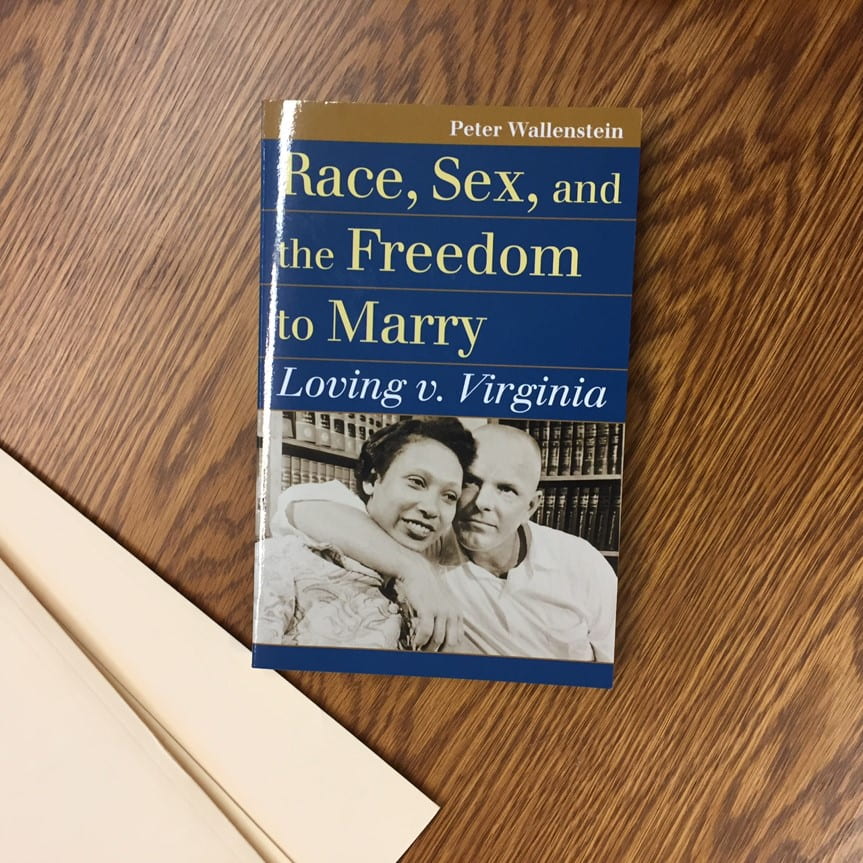
AA: Despite their obvious differences, do you see any historical parallels between the nationwide repeal of anti-miscegenation laws in the 1960s and the recent repeal of laws banning same-sex marriage?
AL: Again, I think a law professor could answer this better, if this has served as a legal precedent – I suspect it did, but yeah, I see very strong parallels. And I think certainly morally the parallels are really strong, and for what little I know about constitutional history, I would think that the legal parallels are strong, too.
If nothing else, again, I wish I knew the exact legal ruling of Loving, but part of it turns on the Full Faith and Credit Clause of the Constitution; if something is recognized in one state, then it should be recognized in other states. So, you know, that means if someone is married in the District of Columbia, for example, a mixed-race couple, that marriage needs to be recognized when they travel across the state line to Virginia, otherwise you’re going to have legal chaos.
So, there’s that, and then there’s privacy law, and the Fourteenth Amendment which says you can’t deny people equal justice under the law – the states cannot deny people their civil rights, essentially. So, I don’t remember which of those constitutional merits the case turned on, but those are very similar to the gay marriage issue.
It’s the same thing with why should people, because of their sexuality, be denied equal justice, and equal access to the law, and all the sort of the things that go with being married?
This is what is amazing to me — so after 1967 if interracial marriage was no longer legally controversial, it was socially controversial. In 1967, for sure, not only was gay marriage not an issue, this was something that would not have crossed anyone’s mind, to say “Oh yes, homosexuals will be allowed to get married someday” would have been like saying “We’re going to be ruled by racist space aliens 25 years from now.”
It really was not even remotely in most people’s political imaginations. I don’t even think it was necessarily in gay people’s political imaginations at that point – although I could be wrong. So, the degree of change, even in my lifetime, the degree of change on these issues has been really remarkable.
AA: Even from the ’80s, with the AIDS epidemic, and Reagan….
AL: Yes, yes, it’s been remarkable. So that’s all for the good. Unfortunately, because of that change, we have pretty vibrant social movements that are pushing back against it very strongly, so again, I think the film is timely because for that reason – or should be. Although it’s also amazing to think that – when did the film come out? I think last February.
Even now, in retrospect, [that] looks like more of an innocent time. You didn’t have people parading in the streets, in the state of Virginia, demanding the purity of the white race be protected. You’d never thought you’d see that, 50 years after Loving.
Ultimately, I think these social changes are irreversible, but that doesn’t mean that there aren’t going to be people who try to use the power of the law. You’d better believe the Attorney General of the United States is very eager to try to turn back a lot of the past progress of the last 20 years, and openly says so.
So unfortunately, no, I would say that progress can be reversed. Intermarriage isn’t going to be legally reversed, but I would suspect it still makes people uncomfortable in lots of communities, not just in the South. It probably still makes people uncomfortable, don’t you think? Maybe not in your generation.
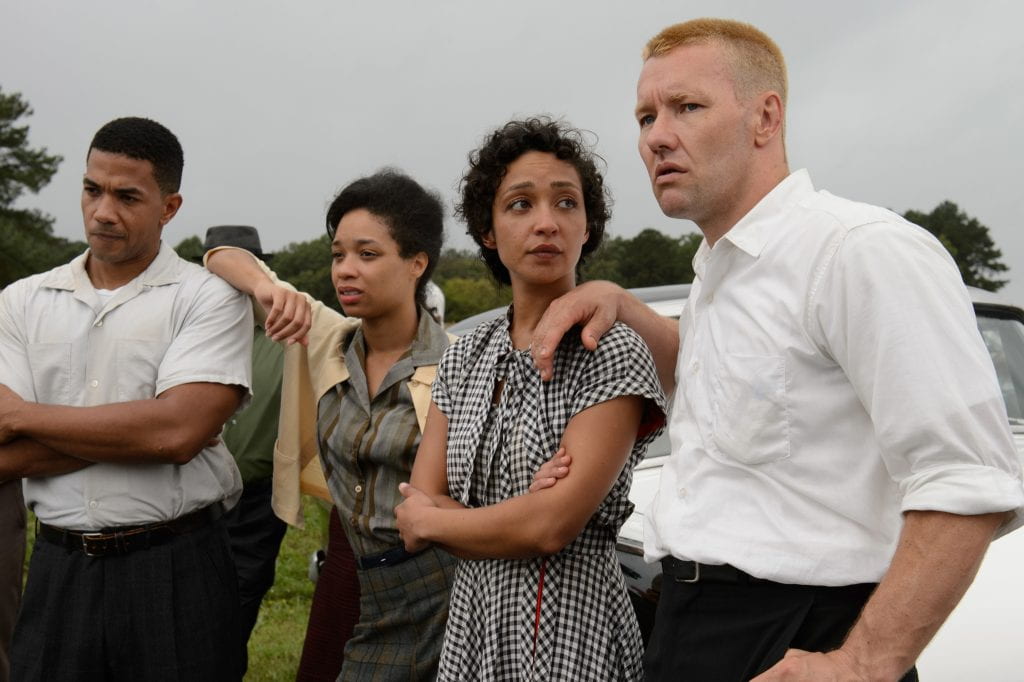
HB: I feel like it’s still a big deal to see an interracial couple in media. Maybe in day-to-day life no one would say anything, but I think even in just media representations…
AL: You still notice it.
AA: In commercials…
HB: It’s still like a big deal.
AL: Even if you see it as a positive, you notice it. You go “Ah! Ahah!” So, when we get to the stage when we don’t even notice – whether we see it as a positive development or whether there are people who resist it – it’s only when we get to the stage where we just don’t even notice, that would be good. I think we’re a long way away from that unfortunately, but that might be the ideal world.
Interracial relationships and even marriages have always existed from the beginning of this country, when people were thrown together, forcibly, and you know, the debates are really about whether they were loving relationships or whether they were cast in slavery and domination.
HB: So, it makes sense in that…making it at least legal, wouldn’t change that long-lasting social tradition.
AL: That’s why there were laws in the first place, because this would have been that natural default position of people, to fall in love regardless of their color and their station in life, but slave owners regarded black people as their property, and whites who regarded black people as people who were lesser than them, wanted to “protect the white race.”
These laws were part of that battery of racial domination and white supremacy. So, the film packs a lot of punch even in this little quiet, quiet story.
Loving will be shown at the IU Cinema on October 22 as part of the International Arthouse series and the Themester series Diversity ● Difference ● Otherness.
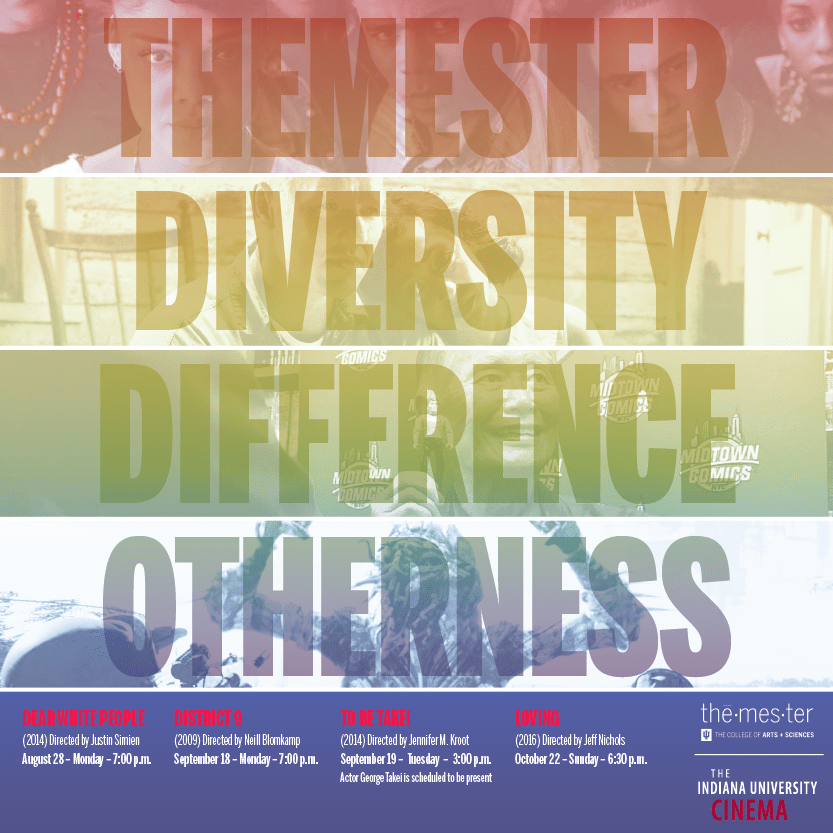

Alex Lichtenstein is a professor in the Department of History, an adjunct professor in the Department of American Studies, and the Director of the Global Living-Learning Center on campus. He is also an editor at the American Historical Review, and his research interests include U.S. labor history, South African history, civil rights, communism and anticommunism, and the U.S. South.

Alex Armijos is a 2017 Themester intern and a senior majoring in anthropology.

Hannah Boomershine is a 2017 Themester intern and a senior majoring in journalism.
